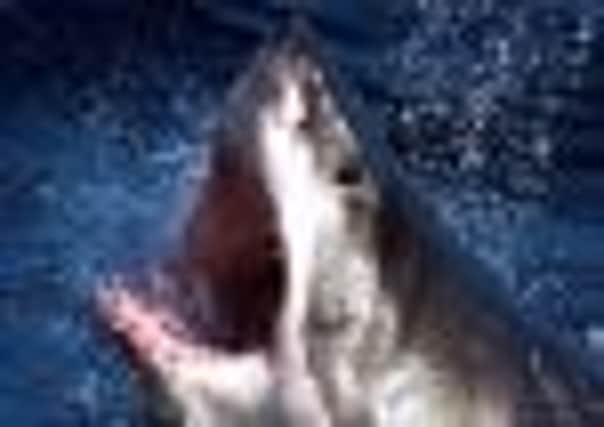Roger Cox: Just when Scottish surfers thought it was safe to go back in the water...


I frequently find myself having to itemise the many good reasons for surfing here (great waves, no crowds, long summer evenings) in an attempt to prove my sanity; and one of the clinchers in these conversations has always been the lack of dangerous beasties lurking off our coasts.
“Ah yes,” I’ll say to a quizzical elder at a wedding reception or drizzly barbecue, “the water is indeed warmer in Australia, but surfers there risk being mauled by great white sharks. In Scotland, we have otters and seals and minke whales. Our waves can sometimes be scary, but our aquatic critters? Not so much.”
Advertisement
Hide AdRecently, however, I’ve had to tone down this argument somewhat. Last autumn surfer Andrew Rollo was “bumped” by an 8ft shark while surfing with friends in the mouth of the River Spey. Had he not had the presence of mind to put his surfboard between himself and Jaws, he reckons he might have been a goner.
According to experts, the shark was probably a porbeagle – a close relative of the great white that looks, well, a lot like a great white, only slightly smaller. So yes, we do have sharks – big, bitey ones too – but no one has ever been killed in a shark attack in UK waters and incidents are extremely rare. I repeat, no one has ever been killed in a shark attack in UK waters and incidents are extremely rare.
Still, the Spey Bay bumping does punch a bit of a hole in my time-honoured “no nasty beasties” routine. And as if Rollo’s near miss isn’t enough to make a fella think twice before heading out to sea with nothing but a thin sliver of foam and fibreglass for protection, a book has just been published which describes in graphic detail some of the other monsters said (by some) to inhabit the waters around Scotland. The Fabled Coast by folklorists Sophia Kingshill and the late Jennifer Westwood is a real treasure trove of the various myths, legends, rumours and lies that have attached themselves to Britain’s coastline over the centuries. This new compendium contains everything from the well-kent legends of the Mary Celeste and the Flying Dutchman to supposed mermaid sightings in almost every nook and cranny of the British Isles, and it is also home to a colourful cast of sea monsters – many of them said to have been sighted in Scottish waters. Of course, it’s highly unlikely that any of these creatures ever existed, but still – I feel duty bound to tell my fellow water users about them just in case...
In 1808, the Reverend Donald Maclean, minister of Eigg, was rowing around the coast of Coll, presumably searching for inspiration for his next sermon, when he encountered a creature of “unusual appearance and magnitude”. Or, to put it another way, a 70-80ft-long sea serpent that bulged below the neck and then tapered away at the tail and moved “at great speed” by undulating up and down. The minister of Glenelg, John Macrae, described Maclean as “quite a man to be believed,” which I suppose could be taken two ways.
About a century later, and on the other side of the country, the steam trawler Craig-Gowan was rounding Rattray head in Aberdeenshire when the engineer reported to the captain that they were being followed by what appeared to be a giant snake. For reasons best known to himself, Ballard tied the furnace rake to a length of rope and threw it at the creature, which repaid the favour by smashing up the ship’s rigging. Moral of the story: don’t throw rakes at sea monsters. There are also reports of Kraken-like creatures off Rothesay and Shetland and something sighted off Skye in 1872 that was “dark as a black slug”, around 100ft long and fond of charging at boats. The most worrying entry, however, concerns The Animal of Stronsa – a huge carcass washed ashore on the Orcadian island now spelled Stronsay in 1808. It was, according to the poet Thomas Campbell, “a sea snake with a mane like a horse, 4ft thick, and 55ft long – this is seriously true.” Zoologists, however, agree that the animal was probably a shark. So that’s alright then.